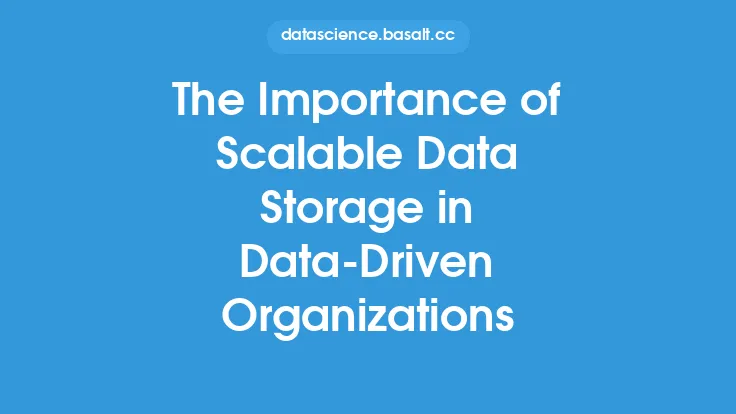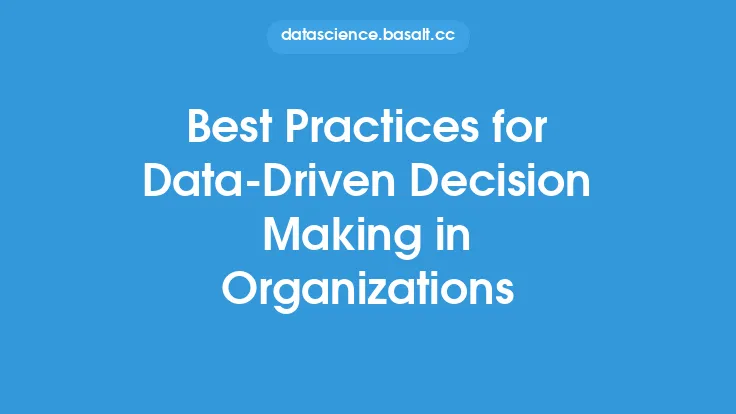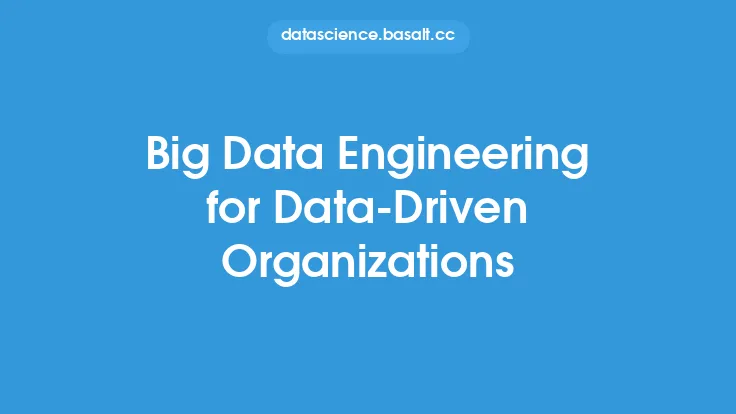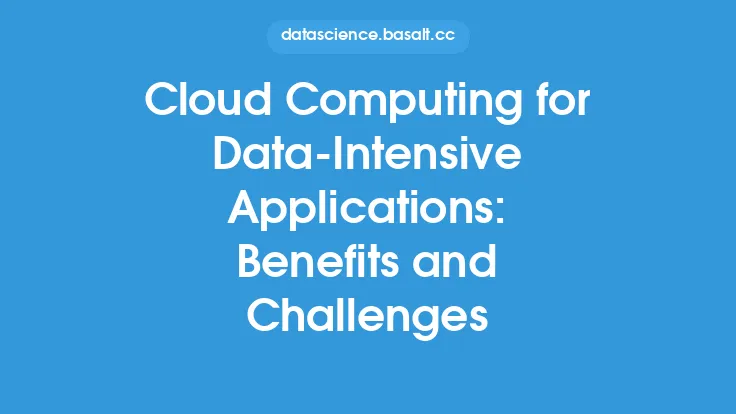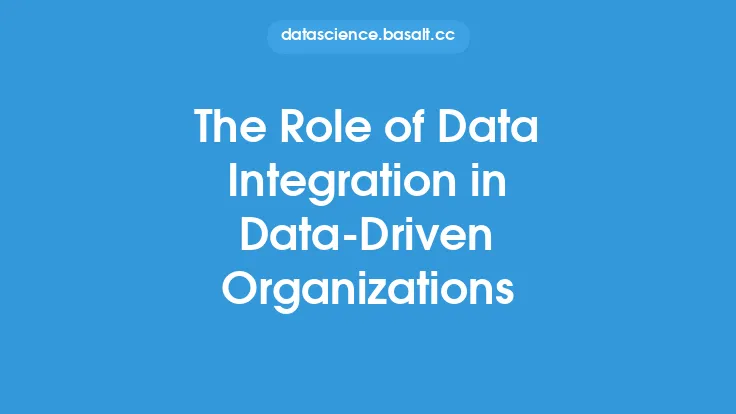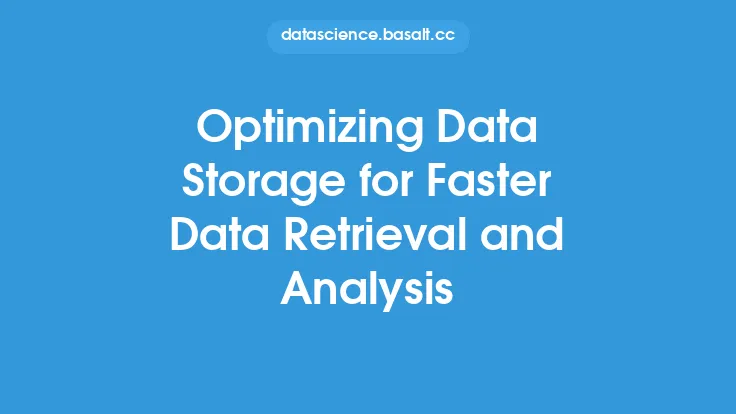As data-driven organizations continue to grow and expand, their reliance on cloud computing to store, process, and analyze large amounts of data has become increasingly important. However, with the benefits of cloud computing come significant costs, which can quickly add up if not properly managed. Optimizing cloud costs is crucial for data-driven organizations to ensure they are getting the most out of their cloud investments while minimizing waste and reducing expenses.
Understanding Cloud Cost Drivers
To optimize cloud costs, it's essential to understand the key drivers of cloud expenses. These drivers include compute resources, storage, networking, and data transfer. Compute resources, such as virtual machines and containers, are a significant cost driver, as they are often used to process and analyze large datasets. Storage costs, including object storage and block storage, can also add up quickly, especially for organizations with large amounts of data. Networking costs, including data transfer and bandwidth, can be significant, especially for organizations that need to move large amounts of data between different cloud regions or on-premises environments. Finally, data transfer costs, including data ingress and egress, can be a significant expense, especially for organizations that need to move large amounts of data in and out of the cloud.
Right-Sizing Cloud Resources
One of the most effective ways to optimize cloud costs is to right-size cloud resources. This involves ensuring that the correct type and size of resources are allocated to meet the needs of the organization. For example, using a smaller virtual machine instance can significantly reduce costs compared to using a larger instance that is not fully utilized. Similarly, using a lower-cost storage option, such as object storage, can be more cost-effective than using a higher-cost option, such as block storage, for data that is not frequently accessed. To right-size cloud resources, organizations can use cloud provider tools, such as AWS CloudWatch or Google Cloud Monitoring, to monitor resource utilization and adjust resource allocations accordingly.
Reserved Instances and Committed Use Discounts
Another way to optimize cloud costs is to use reserved instances and committed use discounts. Reserved instances allow organizations to reserve a specific amount of compute resources, such as virtual machines or containers, for a fixed period, usually one or three years. In exchange for this commitment, cloud providers offer significant discounts, often up to 75% off the on-demand price. Committed use discounts, on the other hand, provide discounts for committed usage, such as a certain amount of storage or data transfer, over a fixed period. By using reserved instances and committed use discounts, organizations can significantly reduce their cloud costs, especially for resources that are used consistently over time.
Autoscaling and Automation
Autoscaling and automation are also essential for optimizing cloud costs. Autoscaling allows organizations to automatically adjust the number of resources, such as virtual machines or containers, based on changing workload demands. This ensures that resources are not underutilized or overprovisioned, which can help reduce waste and minimize costs. Automation, on the other hand, allows organizations to automate routine tasks, such as resource provisioning and deprovisioning, which can help reduce the risk of human error and minimize costs. By using autoscaling and automation, organizations can ensure that their cloud resources are optimized for cost and performance.
Cost Allocation and Tagging
Cost allocation and tagging are also critical for optimizing cloud costs. Cost allocation involves assigning costs to specific departments, teams, or projects, which can help organizations understand where their cloud costs are coming from and make informed decisions about resource allocation. Tagging, on the other hand, involves assigning metadata to cloud resources, such as virtual machines or storage buckets, which can help organizations track resource utilization and allocate costs accordingly. By using cost allocation and tagging, organizations can gain visibility into their cloud costs and make data-driven decisions about resource optimization.
Cloud Cost Optimization Tools
Finally, there are a variety of cloud cost optimization tools available that can help organizations optimize their cloud costs. These tools, such as ParkMyCloud, Turbonomic, or Cloudability, provide features such as cost monitoring, resource optimization, and automation, which can help organizations reduce waste and minimize costs. By using these tools, organizations can gain visibility into their cloud costs, identify areas for optimization, and automate routine tasks to minimize waste and reduce expenses.
Best Practices for Cloud Cost Optimization
To optimize cloud costs, organizations should follow best practices such as monitoring resource utilization, right-sizing resources, using reserved instances and committed use discounts, implementing autoscaling and automation, and using cost allocation and tagging. Additionally, organizations should regularly review their cloud costs and adjust their resource allocations accordingly. By following these best practices, organizations can ensure that their cloud costs are optimized for cost and performance, and that they are getting the most out of their cloud investments.
Conclusion
Optimizing cloud costs is crucial for data-driven organizations to ensure they are getting the most out of their cloud investments while minimizing waste and reducing expenses. By understanding cloud cost drivers, right-sizing cloud resources, using reserved instances and committed use discounts, implementing autoscaling and automation, and using cost allocation and tagging, organizations can significantly reduce their cloud costs. Additionally, by using cloud cost optimization tools and following best practices, organizations can gain visibility into their cloud costs, identify areas for optimization, and automate routine tasks to minimize waste and reduce expenses. By optimizing cloud costs, data-driven organizations can ensure that their cloud investments are aligned with their business goals and that they are getting the most out of their cloud resources.
